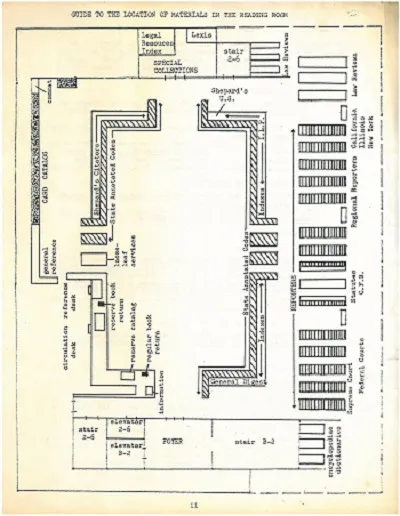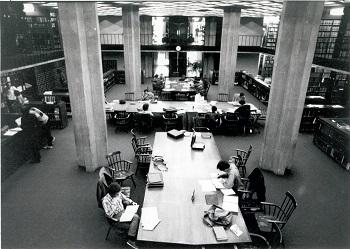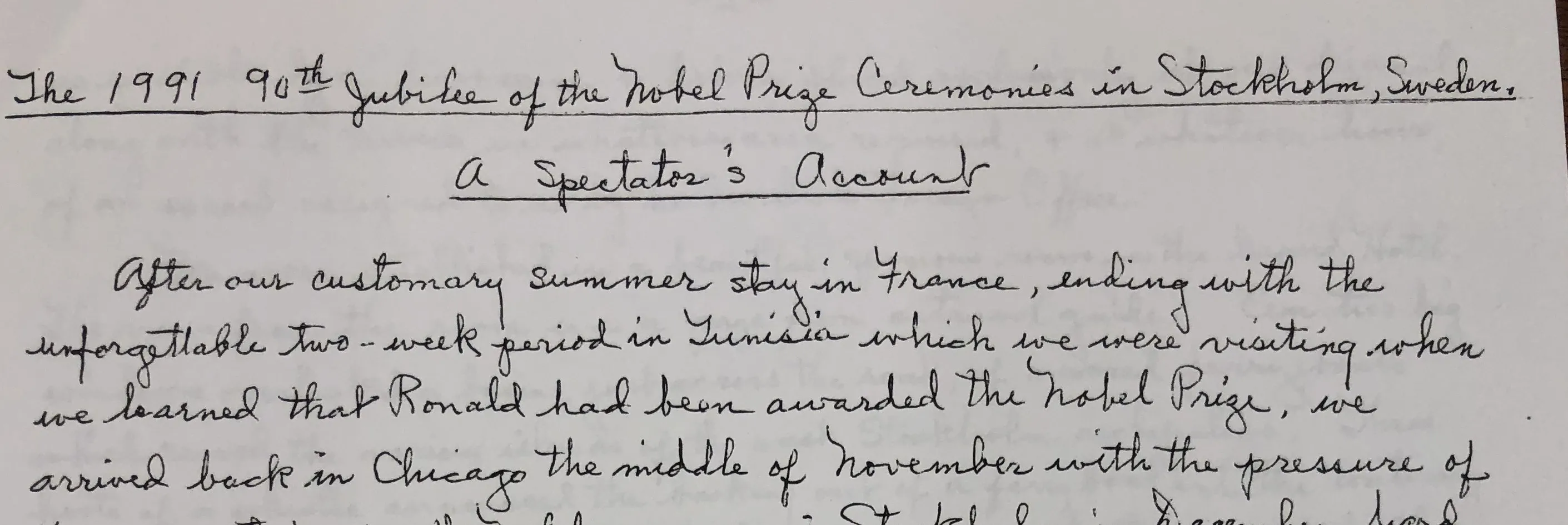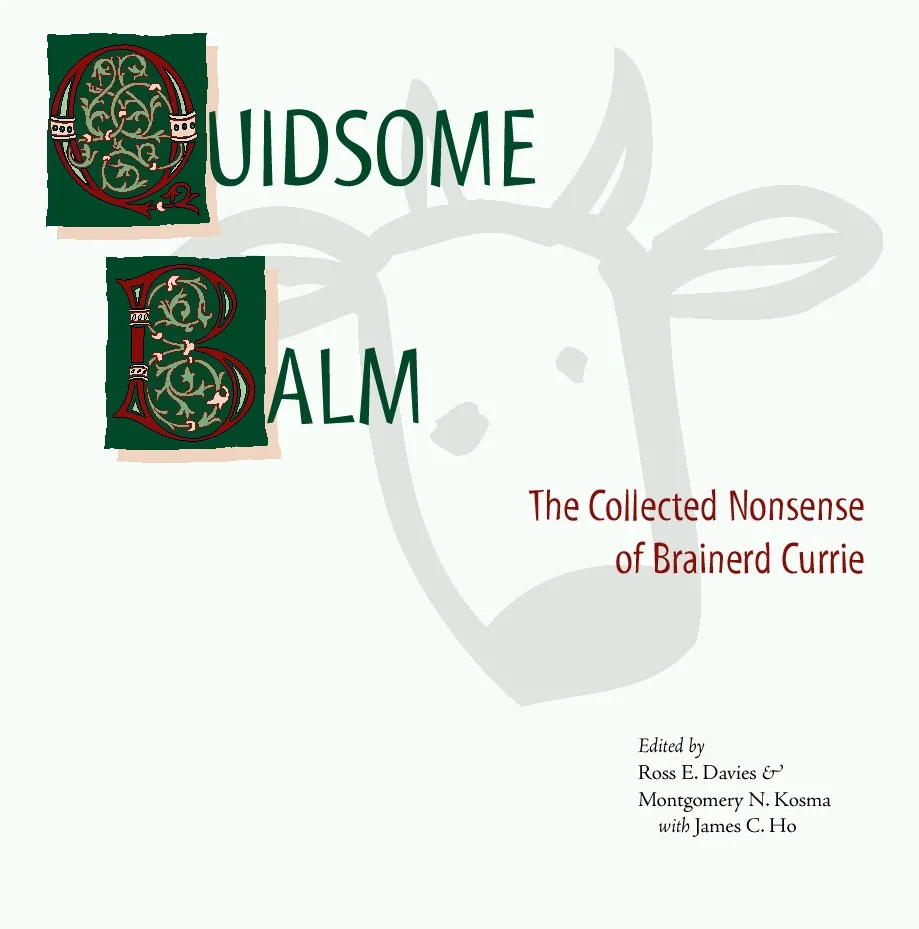The Law Library on the Cusp of the Digital Age

Throwback Thursday is an occasional feature offering glimpses into the Law School’s rich history.
There’s a hand-drawn map of the law library’s second-floor Reading Room that harkens back to a barely digital age—a time when card catalogs and bound volumes of Shepard’s Citations took center stage and the latest technology included a dedicated Lexis machine with a dialup modem and a clunky “comcat” terminal that couldn’t even search whole words. It appears to have been created some eight or nine years before the library was expanded, renovated, and renamed in honor of Dino D’Angelo, ’44, in 1987.
It’s a small piece of the library’s past—but one that serves as a visible reminder of how far technology, legal research, and the law library itself has come in the past three or four decades. The drawing, part of an old law library guide, was sent to the Law School late last year by Peter J. Orlowicz, '11, who works as an attorney with the US Railroad Retirement Board and found the map on a shelf in the RRB's law library.
“It’s interesting to look at this and see what was most prominent in the space,” D’Angelo Law Library Director Sheri Lewis said of the map, which appears to represent the Reading Room in the late 1970s. Back then, federal, state, and regional case reporters filled stacks along the north end of the room, and bound copies of state annotated codes, various indices, and the latest copies of Shepard’s ringed the center of the room.
“These were obviously a very important resource, so they had prime real estate,” Lewis said, remembering the days when a lawyer or law student needed to consult the bright red books to find tables of citations to see if a case had been overturned, reaffirmed, questioned, or cited by later cases. “But this was also a system that was just screaming for automation.” (LexisNexis released an online version of Shepard’s in 1999.)
The 1970s library also featured a built-in card catalog along the southwest wall, just past the circulation and reference desks. At the beginning of that decade, the library was already crowded, and books were being moved into Harper library for storage, said Judith Wright, who retired as the law library’s director in 2013 after more than four decades. “We sold the second copy of the English Reports to make space—very painful!” Wright said.
Online cataloguing was nascent; there was a single “dumb” terminal that hooked into the Library Data Management System mainframe. The comcat (computerized catalog) terminal didn’t have a search engine, and users could only type in portions of words, said Bill Schwesig, the D’Angelo’s Anglo-American and Historical Collections Librarian, who has worked in the law library since 1986. As the technology advanced, though, searching became easier—and the library eventually undertook a long project to digitize all of its catalog entries. When the library was renovated again in 2008, the printed card catalog was removed.
It wasn’t always easy to accommodate emerging technology: when the building was built in the late 1950s, few could have anticipated how important wiring would become.
“There were few plugs, few telephone lines—it was a major problem,” Wright said. “It was hard to find a place to put anything.”
When the first Lexis terminal arrived in the late 1970s, it ended up in the Rare Book Room at the far west end of the library because there was a place to plug it in. The dedicated microfilm reader on which users could view an index of law reviews and other academic journals was installed nearby.
The 1970s library was smaller and darker. There was wasn’t yet a staircase in the center of the room—that came with the 2008 renovation—and there were three heavy wood tables surrounded by dark wood chairs with hunter green cushions, several of which can be found now in Lewis’s office. The latest law journals were kept in stacks in the room’s northwest corner, and Lewis said faculty would stroll through and browse the latest scholarship.
In those days, law library staff spent a lot more time handling print material—labeling, shelving, and routing material to faculty. A huge volume of mail came to the library each business day and on Saturday, including Shepard’s pamphlets and other updates, new materials, and more.
But as the computer age took hold, and resources and catalogs moved online, the work of the law librarians evolved, too.
Today, “their work is so much more complex and requires a vast knowledge ranging over incredible print and online resources along with sophisticated knowledge about ever-changing technology,” Wright said. “In addition, law seems to have become more complex, and scholarship and teaching reflect that complexity.”
One thing, however, has remained constant, Wright said.
“From my earliest days in 1970s to the day I retired, we always had committed faculty and students who were very serious about their work—and always trying to keep a step ahead of whatever (research tools) were available. It was amazing how quickly students and faculty adapted to each new thing.”




